Top 10 safety checks operators must do before starting
When it comes to heavy machines, safety isn’t just something you do once. It’s part of the job every day. Before starting any machine, smart operators make sure the site is safe, the equipment works, and everyone is protected. Doing a safety check helps prevent problems and keeps the job running safely.
This article covers the top 10 safety checks every operator should do before using any heavy machine. These tips come from real job site experience and work for all kinds of equipment like dozers, loaders, excavators, compactors, and telehandlers.
Why do safety checks matter before using heavy equipment?
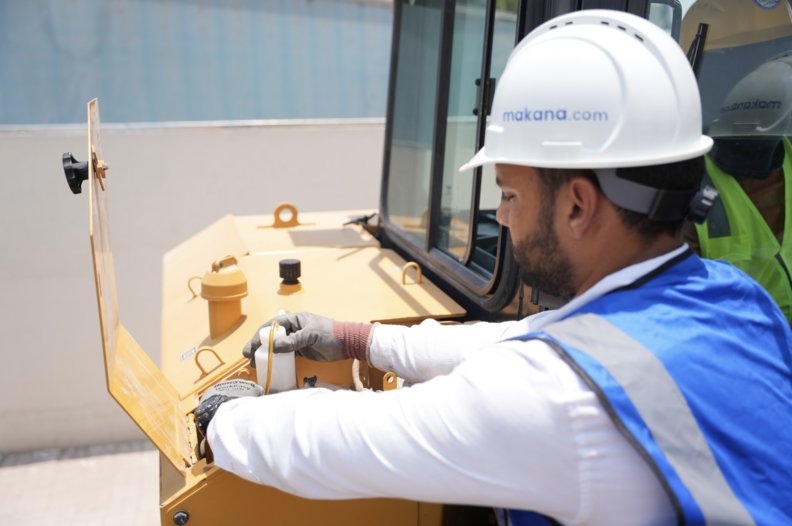
Skipping a safety check can lead to serious damage or even accidents. Here’s why they’re a must:
-
Catch problems early so the machine doesn’t break down on the job.
-
Keep people safe, including the operator and everyone nearby.
-
Follow the rules, since most places require safety checks by law.
-
Make your equipment last longer by spotting wear and tear early.
-
Keep the job moving with fewer delays from broken machines.
1. Inspect the machine's walk-around condition
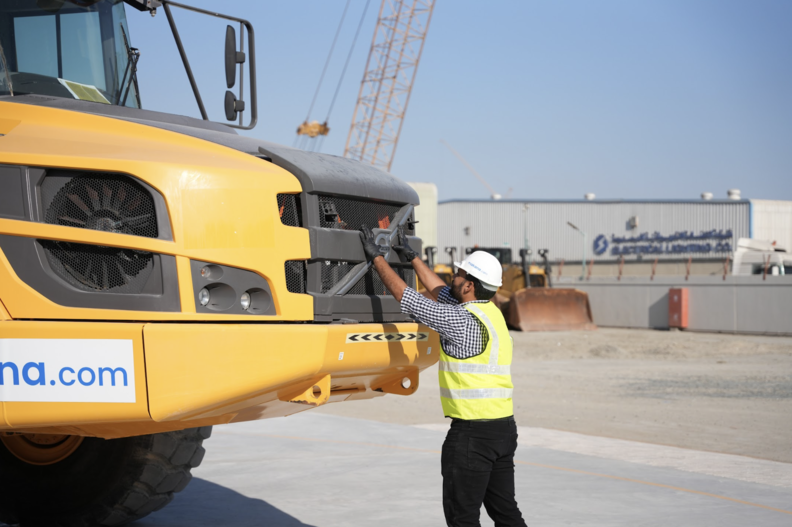
Before stepping into the cab, start with a full walk-around inspection. This gives a visual overview of the machine’s external condition.
What to look for:
-
Fluid leaks under the chassis (hydraulic oil, engine oil, coolant, fuel).
-
Cracked or bent handrails, steps, or access ladders.
-
Loose or missing bolts, pins, or guards.
-
Condition of tracks or tires (look for cuts, abnormal wear, proper tension)
Example: On a Cat 966L wheel loader, check the articulation point for debris buildup or visible structural damage.
2. Check fluid levels and top up if necessary
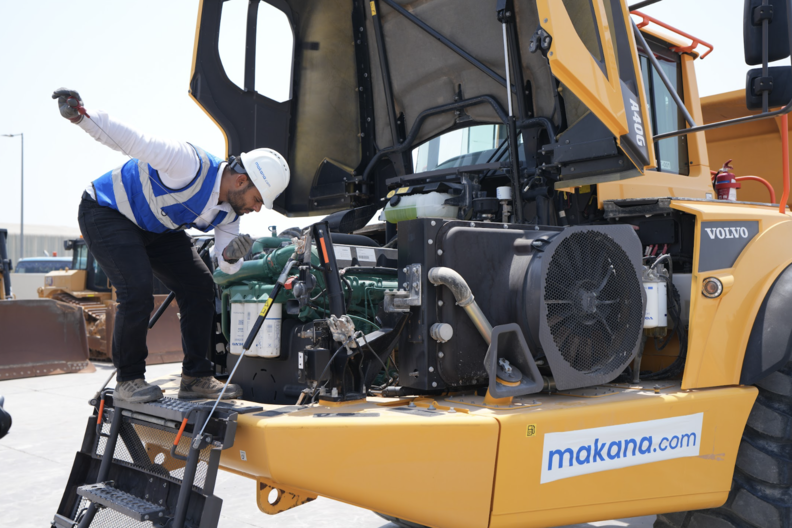
Fluids are the lifeblood of heavy equipment. Operating without the correct fluid levels risks overheating, poor performance, or total engine failure.
Key fluids to inspect:
-
Engine oil.
-
Coolant.
-
Hydraulic fluid.
-
Transmission fluid.
-
Fuel level.
On many modern machines, digital displays show levels; however, manual dipstick and sight glass checks are still critical, especially on older units.
3. Inspect hydraulic lines and cylinders
Hydraulic systems power most functions in excavators, dozers, and loaders. Leaks, cracks, or wear can impair movement and compromise load control.
Steps to follow:
-
Visually inspect hoses for abrasions or bulges.
-
Check couplings and connectors for drips.
-
Ensure cylinder rods are straight and not scored.
Real-world example: A Kobelco SK350LC-10 with a leaky boom cylinder will show drift under load, this is both inefficient and dangerous.
4. Verify the integrity of safety systems
Heavy equipment safety systems include seat belts, backup alarms, cameras, mirrors, and lighting, all of which must be functional before operation.
Essential checks:
-
Seatbelt condition and retraction.
-
Horn and backup alarm.
-
Emergency stop switch.
-
Fire extinguisher (charged and accessible).
-
Cameras and mirrors (clean, undamaged, properly positioned).
-
Lighting systems (especially if operating in low visibility).
These systems are especially critical on machines with significant blind spots, such as the Volvo A40G articulated dump truck.
5. Test the brake system and steering response
Malfunctioning brakes or sluggish steering can lead to serious incidents, especially on inclines or tight workspaces.
Checklist:
-
Foot and parking brakes must engage/disengage fully.
-
No sponginess or lag in brake pedal.
-
Steering should respond smoothly without abnormal noises.
If operating a Cat 428 backhoe loader, test both the front steering and rear brake functionality before use in confined urban projects.
6. Ensure all gauges and warning lights are functional
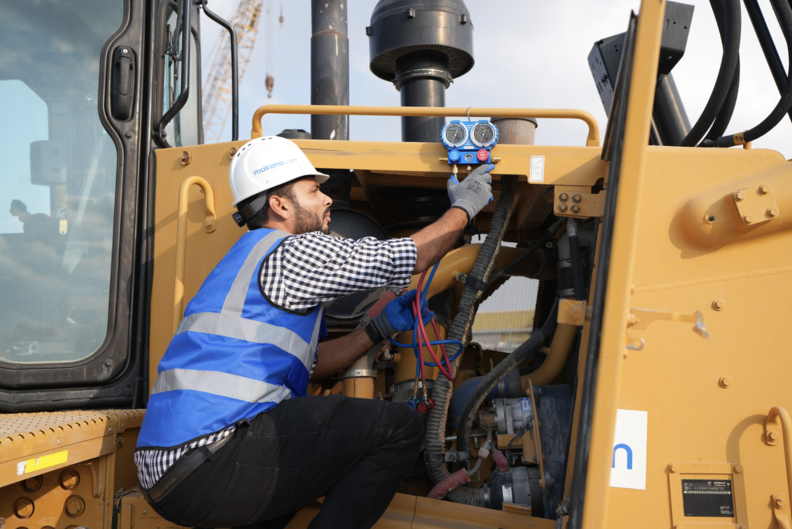
Once the ignition is turned on but before the engine starts, the dashboard should light up briefly, this is the self-test cycle. Indicators that stay on or don’t light up at all could suggest electrical or sensor failures.
Focus on:
-
Engine temperature.
-
Oil pressure.
-
Hydraulic temperature.
-
Fuel level and DEF gauge (for Tier 4 Final machines).
-
Battery voltage.
A faulty indicator on a Dynapac CC1200 VI compactor, for example, can lead to overheating or ineffective vibration performance if ignored.
7. Check attachment condition and coupling integrity
When working with buckets, forks, rippers, or hydraulic hammers, the attachment must be inspected for cracks, wear, and proper fitment.
What to do:
-
Inspect welds and cutting edges.
-
Ensure pins are seated and secured.
-
Verify quick coupler locks (manual or hydraulic) are fully engaged.
-
Check hydraulic lines for auxiliary tools.
On a Cat 323D3 excavator, a worn-out bucket tooth can reduce penetration, increasing fuel use and time per task.
8. Inspect undercarriage or tire condition
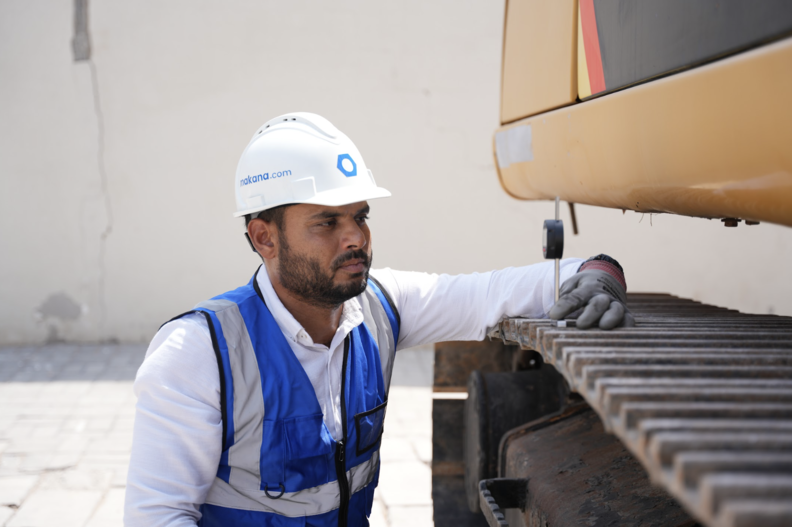
The undercarriage on tracked machines like the Komatsu WA470-6R wheel loader must be cleaned and checked for abnormal wear.
Track inspections should include:
-
Track tension.
-
Wear on idlers, sprockets, and rollers.
-
Mud or debris buildup.
-
Missing or loose bolts.
For wheeled equipment like the Bobcat S510, ensure tires are properly inflated and free from sidewall damage or punctures.
9. Test the controls and throttle response
Before you begin moving the machine, it's essential to test the hydraulic controls, throttle, and travel functions in a safe, open area.
Things to test:
-
Boom, arm, bucket movements (should be smooth and consistent).
-
Joystick sensitivity and return-to-neutral.
-
Travel direction (forward/reverse).
-
RPM increase and throttle return.
Tip: If controls feel sluggish on a Cat 305.5E2 mini excavator, check the auxiliary circuit pressure, it could be throttling system response.
10. Review the job site and environment
The final check goes beyond the machine, it involves surveying the job site.
Look for:
-
Soft ground or sinkholes.
-
Overhead hazards (power lines, trees).
-
Nearby personnel or machinery.
-
Weather conditions affecting visibility or traction.
-
Emergency exit routes.
Pro tip: If you’re operating a JCB 540-170 telehandler, ensure the stabilizers are on level ground and the area is free of bystanders during lifting.
How do I structure a pre-start checklist for my fleet?
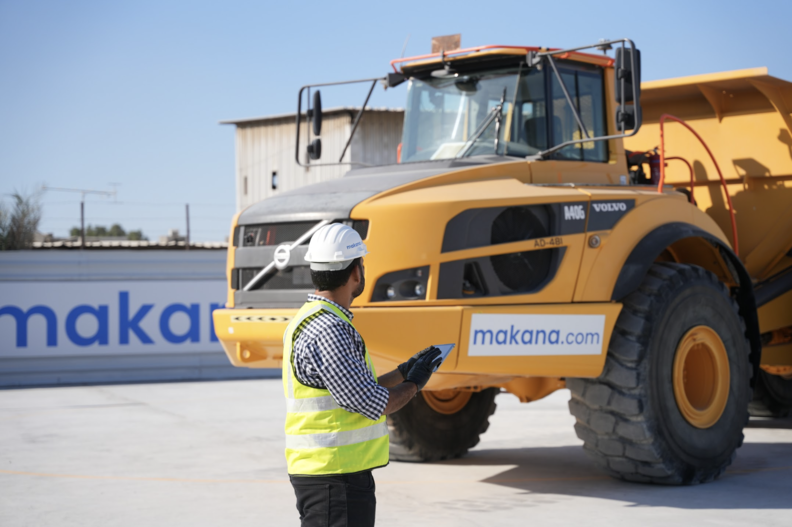
Here’s how to build a structured daily checklist suitable for all operators:
-
Standardized form: Use paper or digital logs for consistency.
-
Time-based sequence: Start with walk-around, then fluid levels, then cab systems.
-
Machine-specific fields: Include model-specific requirements (e.g., DEF levels on Tier 4 Cat machines).
-
Operator sign-off: Require name, date, and machine hours for accountability.
What are the consequences of skipping safety checks?
Operators and fleet managers should understand the risks of skipping even one step:
-
Increased repair costs: Minor leaks turn into major failures.
-
Reduced resale value: Poor documentation of maintenance history lowers buyer trust.
-
Legal liability: Accidents due to neglected checks may result in legal action.
-
Unplanned downtime: Emergency repairs stall job site operations.
Which machines require the most rigorous checks?
While all machines need thorough inspection, some require extra attention:
-
Bulldozers like the Cat D8T have complex undercarriages and blade hydraulics.
-
Articulated dump trucks like the Volvo A40G demand close steering and brake scrutiny.
-
Compact machines (e.g., Bobcat S510) may be used in tight areas where safety risks are higher.
Conclusion
Pre-operation safety checks are not optional, they are the first line of defense against mechanical failure, job site accidents, and costly downtime. Daily inspection habits protect both assets and lives. For professional operators and fleet managers, platforms like makana.com make it easier to find pre-inspected, well-documented equipment that’s ready to perform reliably on day one.
:quality(50)/61299/0d4d0e6a-87bd-434d-b51d-0ed350f48a0d.png)
:quality(50)/61298/e1b9c943-ea34-45cc-9fea-34fade99bcd3.jpg)
:quality(50)/61061/3e9b31b3-f123-4062-ad0a-786de9d27c23.png)
:quality(50)/56163/398d5d5c-eaaa-4699-865a-f097c6ef2d6e.jpg)
:quality(50)/55270/58813e91-51ab-4eb3-a84a-ab7feda223e7.webp)
:quality(50)/54257/Hard-Hats-Cover--bigcommerce.jpg)
